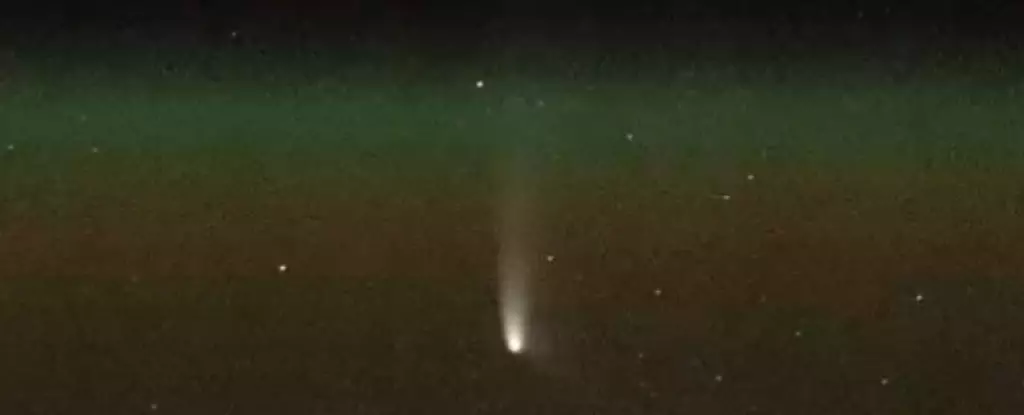January 2023 marked a significant moment for astronomy enthusiasts with the discovery of Comet C/2023 A3 (Tsuchinshan-ATLAS). Often, new comets grace our skies, yet this particular celestial body has sparked a wave of excitement, being touted in some quarters as potentially the “comet of the century.” However, astronomy is fraught with unpredictability, particularly regarding celestial brightness. Experts have tempered these lofty claims, reminding us that truly assessing the comet’s brilliance can only happen as it approaches the inner solar system.
As we progress through 2023, glimpses of Comet C/2023 A3 are affording stargazers the chance to witness this astral visitor, anticipated to culminate in an astonishing display as it nears perihelion, or its closest approach to the Sun. This celestial event draws significant attention, especially for amateur astronomers and nature lovers keen on witnessing something extraordinary.
Currently gracing the morning sky, Comet C/2023 A3 could be spotted with the naked eye in areas like Australia and Aotearoa New Zealand. Observers can view the comet rising approximately an hour and a half before sunrise, appearing as a fuzzy star in the sky. While it may not yet dazzle, those equipped with binoculars can discern its dusty tail stretching away from the Sun.
To catch this comet at its brightest, understanding timing and location is crucial. The comet will soon approach the horizon, making it increasingly difficult to spot as the days progress, eventually disappearing into the morning light around early October. This shrinking window for optimal viewing heightens the thrill for skywatchers who plan to seize their opportunity to gaze at the comet before it becomes obscured.
As Comet C/2023 A3 reaches its perihelion on September 27, just 58 million kilometers from the Sun, expectations for brightness are heightened. The fascinating interplay of light and dust becomes critical as the comet swings around the Sun. If the right conditions prevail, the process known as forward scattering could significantly enhance the comet’s visibility. When it comes between the Earth and the Sun around October 9 and 10, the combination of sunlight filtering through the comet’s dust could lead to an explosive increase in luminosity.
The prospect of the comet becoming visible during daylight hours elicits a thrilling notion, albeit for seasoned viewers only. The position of the comet, coupled with a strategic observational approach, is paramount for any potential sightings. For inexperienced observers, caution is warranted—staring directly at the Sun to locate the comet is dangerous.
Once it completes its passage near the Sun, C/2023 A3 will transition to the evening skies, increasing in visibility to naked-eye observers starting around October 12. In these early days of visibility, the comet should continue to showcase its spectral beauty. It presents a captivating visual experience as it ascends in the western sky—a tantalizing opportunity for both photographers and casual stargazers alike.
The cosmic alignment during this period is likely to grant the comet an impressive tail stretching gracefully through the night. While much of this tail may be too faint for unaided vision, experts are optimistic about capturing stunning imagery that could flood social media platforms in mid-October. This demonstrates how advancements in photography contribute to a greater appreciation of meteoric marvels.
Comet C/2023 A3 (Tsuchinshan-ATLAS) is captivating not just in its regularity of brightness so far but also in the inherent unpredictability of comets. Echoing the adage, “comets are like cats,” they can surprise us with sudden bursts of brilliance, or they might fail to meet expectations. Such unpredictability adds an extra layer of intrigue as audiences eagerly await visual manifestations.
There lies a real potential for either grandeur or disappointment as the comet continues its celestial journey. It could fragment upon nearing the Sun, resulting in a breathtaking display of dust and gas, yet conversely, it could fizzle out unexpectedly. Regardless of these possibilities, the coming weeks promise to be delightful for those who follow astronomical events, offering them the chance to witness space’s dynamic wonders firsthand.
Comet C/2023 A3 (Tsuchinshan-ATLAS) captures the imagination by being both predictable and full of surprises. As it nears its apex, the world watches, waiting to engage in the awe-inspiring spectacle of a comet’s ephemeral dance across the cosmic tapestry. Whether it becomes the dazzling star it is predicted to be or falters, one truth remains—watching the sky connects humanity with the universe in breathtaking ways.


Leave a Reply